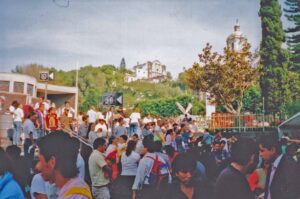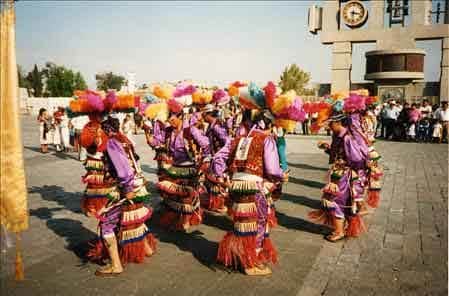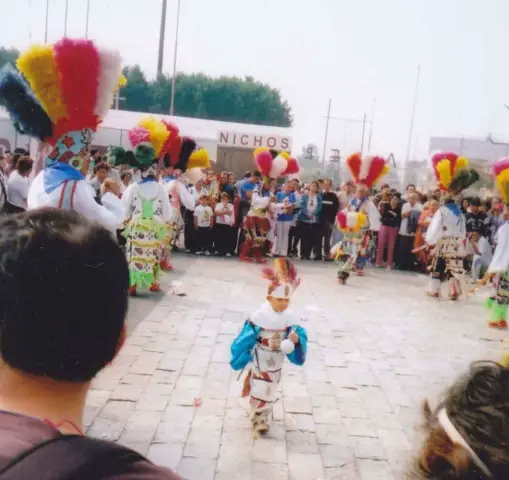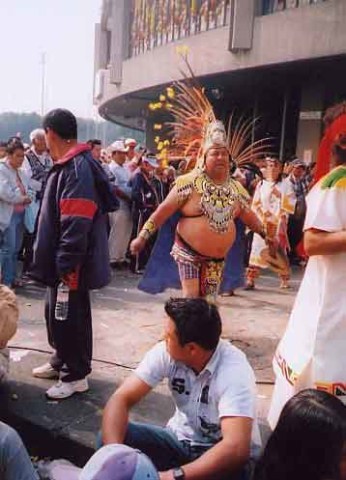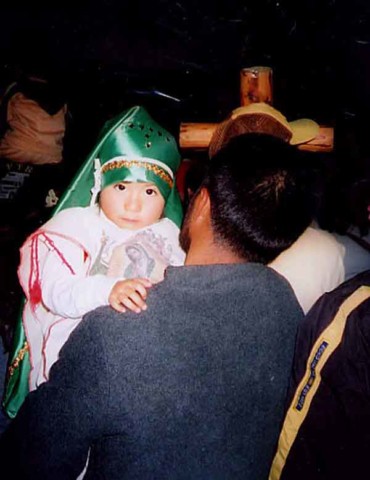I am a person who does not like crowds, so you would think that attending the Feast Day celebrations of Our Lady of Guadalupe in Mexico City on December 12 would be something I would avoid at all costs. After all, well over one million (some estimates say 5 million) people pack the shrine on the Feast Day. And yet I have always relished the times that I have been blessed to attend.
Join me as I reminisce about my first visit to the Shrine of Our Lady of Guadalupe in Mexico City. On the evening prior to the Feast Day, those of us in our tour group who were more adventuresome decided to taxi to the Basilica. Traditionally many famous Mexican singers, performers and high ranking politicians show up for the festivities that start around 10:00 p.m. This lovely tribute goes on deep into the night and the love songs (“Las Mananitas”) sung to Our Lady and the devotion the locals show for her is unlike anything I’ve ever experienced. These are memories I’ll hold deep in my heart forever.
On the Feast Day itself (December 12th) we excitedly boarded our tour bus to take us to the Basilica. But what a surprise was waiting for us! Buses were restricted from getting too close to the shrine and we had to be dropped off quite a few blocks from there. At this point we walked the rest of the way….something that turned out to be a blessing. As usual, God’s plans are better than ours.
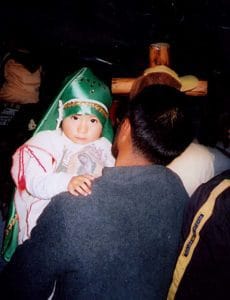
As we walked along with throngs of others all headed in the same direction, we experienced a real feeling of pilgrimage; unity with our fellow Catholics. Those alongside us were mostly Mexican pilgrims, both individuals and whole families, carrying placards of the image of Our Lady of Guadalupe. Many had walked for miles, and sometimes for days, to get here. We passed young people rousing themselves from sleep as they had camped out overnight. These heartwarming images help you to appreciate how universal and vibrant our Catholic Faith is.
There is more to the Shrine than just the Basilica that contains the miraculous Tilma of Juan Diego, although that is certainly the high point. I think many of us were surprised that the grounds encompass both the new and old Basilica (now leaning as if it will fall any moment).
You can also see the room where Saint Juan Diego lived out the rest of his life after the apparitions and his simple grave.
Upon entering the grounds where the Basilica is located, we were presented with a kaleidoscope of sights.
We were greeted by descendants of those original Aztecs dancing in the ancient dress as would have been worn at the pagan festivals prior to the apparitions to Juan Diego. The dancers reverently process in to the Basilica symbolizing the shift from the old pagan religion to the new religion of Christianity that they now so enthusiastically embrace. The colorful dancers add a festive atmosphere to the Celebration of the feast day.
But what moved me the most was that in the midst of it all was the Monastery built atop the Hill of Tepeyac (shown in the top portion of the picture on the left). This is where Juan Diego first encountered Our Lady! To stand in that same spot is a feeling that is hard to describe.
The climb is steep, but unlike the time of the apparitions, there are now stairs to make the climb relatively easy (remember you are at a high altitude, so go easy if you have breathing problems).
The nuns in the monastery are cloistered, so visitors are not allowed.
It might seem more like a carnival than a religious event….. because the Mexican people do not pigeon-hole their faith in to just one hour on Sundays. It is a part of their daily life.

Faith, culture and daily life all come together in this magical land, and nowhere is that more evident than here on December 12th each year.
If you can’t make it to the Shrine on that date, try to find some of the many festivals nearby celebrating this Patroness of the Americas. Or maybe you can catch some of the action on one of the Spanish-language TV networks (don’t even need to speak Spanish to enjoy the celebration) or perhaps one of the Catholic TV networks such as EWTN.

